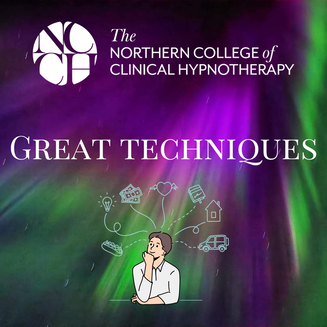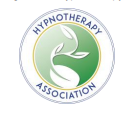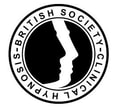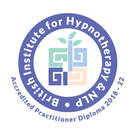 Allergies are a common occurrence in our lives, but have you ever wondered what exactly an allergy is? In essence, allergies are the result of an overreaction by the immune system to a harmless substance. The good news is that these allergic responses can often be eliminated using a powerful technique known as the Counter Example Process. This technique can help retrain the immune system to respond differently and more appropriately. In this blog, we'll dive deeper into allergies, their causes, and how you can use the Counter Example Process to address them. Understanding Allergies: An allergy can be compared to a phobic reaction by the immune system. It's when the immune system overreacts to something harmless, mistakenly identifying it as a threat. For example, the immune system might believe that a normally harmless substance like pollen or dust is dangerous, leading to the release of histamine and the onset of allergic symptoms. Essentially, allergies are like temper tantrums of the immune system, overreactions to substances that are not inherently dangerous. Perpetuating Allergic Beliefs: Sometimes, we perpetuate the idea of allergies in our subconscious minds. For instance, if we hear warnings about avoiding crowded spaces with people coughing or sneezing, we may start to believe that we will get sick in such environments. This belief can further reinforce our allergies. Histamines and Allergies: Allergies often develop during transitional periods in our lives, when our immune system is on high alert due to stress or anxiety. In such situations, the immune system may mistakenly attribute allergic reactions to external factors, when it's actually reacting to the stress itself. The immune system can be trained to react differently, making it important to address the root cause of the stress during these transitional periods. The Counter Example Process: The Counter Example Process is a quick and effective technique, often used in Neuro-Linguistic Programming (NLP), to help individuals overcome allergies, phobias, addictions, or cravings. Here are the nine steps of the process: 1. Calibration: Identify the individual's current state when exposed to the allergen. Note body language, breathing, skin tone, and muscle tension. 2. Explain the Mistake: Let the person know that their immune system has made a mistake in identifying the allergen as dangerous. 3. Check for Ecology: Ensure there's no secondary gain or benefit from the allergic response. Reframe any negative consequences. 4. Find a Counter Example Resource: Identify a situation where the person had a resourceful response to the allergen or something similar with no allergic reaction. 5. Hold the Anchor: Have the person visualize themselves experiencing the counter example in a resourceful state. 6. Introduce the Agent: Gradually reintroduce the allergen while they maintain the resourceful state. 7. Re-associate the Person: Have them imagine themselves being present with the allergen without a reaction. 8. Future-Pace: Encourage them to imagine future encounters with the allergen without a reaction. 9. Test and Retest: Confirm the effectiveness of the process. Example: Dust Allergy Let's consider an example with Emma, who has a general allergy to dust. Dust allergies are often triggered by microscopic dust mites. Using the Counter Example Process, Emma can learn to respond differently when exposed to dust. Allergies are the result of the immune system's overreaction to harmless substances. The Counter Example Process offers a promising way to retrain the immune system and overcome allergies. By following the nine steps of this technique, individuals can learn to respond differently to allergens, ultimately leading to a better quality of life with fewer allergic reactions. Remember, for severe allergies, it's crucial to consult a competent physician before attempting any retraining techniques.
0 Comments
 The Swish Technique, a dynamic tool derived from Neuro-Linguistic Programming (NLP), is a versatile method that holds incredible potential for self-improvement. Its versatility is such that it can be employed both in and out of hypnosis, making it a valuable addition to the toolkit of individuals striving to enhance their lives. In this blog, we will explore the Swish Technique, how it works, and how it can be combined with other NLP and hypnosis methods to supercharge personal growth and transformation. The Swish Technique, a dynamic tool derived from Neuro-Linguistic Programming (NLP), is a versatile method that holds incredible potential for self-improvement. Its versatility is such that it can be employed both in and out of hypnosis, making it a valuable addition to the toolkit of individuals striving to enhance their lives. In this blog, we will explore the Swish Technique, how it works, and how it can be combined with other NLP and hypnosis methods to supercharge personal growth and transformation.
Understanding the Swish Technique: The Swish Technique is not only a fascinating psychological concept but a practical tool that allows individuals to dissolve unwanted thoughts and emotions. It operates by redirecting negative thinking patterns and replacing them with more constructive and positive thoughts and actions. This makes it a valuable asset for therapists and individuals alike. Using the Swish Technique: The Swish Technique is employed in both NLP and hypnosis, and its primary goal is to help individuals manage their responses more effectively in stressful situations. It offers a route to engage in desired behaviours and replace undesirable ones. This method is based on understanding the principles of changing our thought patterns and behaviours, ultimately contributing to self-improvement. How to Use the Swish Technique: 1. Identify the Target: The first step is to identify the specific thought or action you wish to replace. Consider how you want to feel or act instead and the situations that typically trigger the undesired response. 2. Vivid Visualization: Visualize the unwanted thought or action as vividly as possible. Imagine it as if it's a scene on a movie screen in your mind, complete with every detail. 3. Introduce the Desired Change: Create a contrasting image that represents the desired behaviour or thought, placing it in a small, postage stamp-sized frame at the bottom corner of the unwanted image. 4. The Swish: As the key step, imagine a quick and powerful swish, making the new, improved behaviour or thought grow in size and brightness. Simultaneously, shrink and fade the old image rapidly. This is often accompanied by verbal cues such as "whoosh" or "swish" for emphasis. 5. Repetition: While the Swish Technique often works in a single repetition, you can repeat the process if necessary, encouraging clients to focus on the speed of the swish motion. The Swish Technique in Hypnosis: In a hypnotic context, the Swish Technique takes on a powerful dimension. It allows individuals to visualize their new way of thinking and being in an even more immersive manner. Here's how the hypnotic Swish Pattern can be used: 1. Visualization of Present State: While in trance, ask your client to visualize their current situation in great detail without judgment or criticism. This helps them accept where they are in the present moment. 2. Creation of the Ideal State: In contrast, create a vivid image representing the desired outcome or thinking pattern surrounded by a light frame. Make it detailed and rich in sensory input. 3. The Swish Effect: Guide your client to bring back the old image while swishing it onto the screen, possibly even turning it black and white to reduce its impact. The final step is to swish the old image away until the new desired state fills the screen. Making It Real: The strength of the Swish Technique lies in its ability to help individuals experience change through the power of imagination. By living the new scenario in their minds with all their senses engaged, they can create powerful shifts in their thought patterns and behaviours. The Road to Self-Improvement: The Swish Technique can help individuals address a wide range of issues, from smoking cessation to weight loss and much more. It is essential to narrow the focus and prioritize one issue at a time, starting with the most pressing. This makes the technique more effective and manageable. The Swish Technique is a potent tool for self-improvement, harnessing the power of mental imagery to redirect thoughts and actions. Whether employed in NLP, hypnosis, or both, it offers individuals a pathway to transform undesirable behaviours and thought patterns into more positive and constructive ones. By taking control and embracing change, you can unlock the potential for personal growth and achieve your goals. Grief is a universal human experience, yet its profound impact is deeply personal. The journey through bereavement and loss can be both challenging and transformative. In this blog, we will explore the stages of grief and various therapeutic techniques, such as Gestalt therapy, hypnotherapy, and the Empty Chair Technique, that can help individuals cope with loss, heal, and find their way back to a place of love and acceptance. Understanding the Kubler-Ross Model: In 1969, psychiatrist Elizabeth Kubler-Ross introduced the famous Kubler-Ross model in her groundbreaking book "On Death and Dying." This model acknowledges five stages of grief: denial, anger, bargaining, depression, and acceptance. It provides a framework for understanding the emotional journey individuals go through when dealing with loss. The Natural Grieving Process: Grieving is a natural and healthy response to loss. The process is different for everyone, and it is crucial to allow oneself to grieve and process the emotions. Often, the grief journey can be painful, leading to feelings of bitterness and anger. This type of grief can harden the heart, causing unnecessary suffering and even post-traumatic stress. People sometimes replay the events in their minds, further intensifying their pain. The Role of Hypnotherapy: For some individuals, the grieving process can be especially challenging. Stuck in overwhelming realms of pain and sorrow can be emotionally draining, leaving little room for healing and embracing love and positive memories. Hypnotherapy for bereavement and loss provides a valuable set of tools to help individuals navigate this difficult terrain. The goal is to guide clients toward a "return to love." Hypnotherapy Techniques for Bereavement: Gestalt Therapy This approach is grounded in the present moment, focusing on how the past experiences are affecting individuals now. It helps clients reconnect with their emotions and their physical bodies, making them more comfortable with their pain. The Empty Chair Technique This widely recognised Gestalt therapy exercise allows clients to express unfinished emotions. It can be performed both in and out of hypnosis. In the hypnotherapeutic context, clients can imagine they are speaking to their loved ones who have passed away, addressing unresolved conflicts and facilitating closure. Direct Suggestions Hypnotherapists can offer simple, reassuring suggestions to clients, promoting self-care and the importance of restful sleep, which can offer reprieve from emotional turmoil. It's essential to reassure clients that grief is a natural process and that healing and moving forward are possible. Creating a Healing Space Hypnotherapy can help clients create a peaceful mental space or a tranquil sanctuary within themselves where they can reflect, find solace, and heal. Parts therapy can help heal grief and bereavement by addressing internal conflicts, uncovering unresolved past pain, and facilitating reintegration of healed parts. Parts therapy identifies and softens internal conflicts where one part struggles with the loss while another looks forward to moving on. By understanding and addressing the fears and extreme feelings driving these conflicts, therapy helps reduce the internal struggle. Hypnotherapy helps uncover and address unresolved pain from past losses that resurface with current grief. Understanding the origin of these exiled parts carrying old pain allows for healing and alleviation of extreme emotions and beliefs. Once the parts burdened with extreme beliefs or emotions are healed, they can be reintegrated into the inner world. This process reduces the need for distraction or numbing behaviors, leading to a sense of peace and harmony within oneself. Parts therapy helps clients heal by addressing the underlying complexities of grief and facilitating a healthier, more integrated emotional state. The Healing Shift. The aim of bereavement and loss therapy is to help clients experience a shift. This healing shift allows individuals to feel the pain and sadness while also allowing gratitude, joy, and love to coexist. Clients are encouraged to remember their loved ones, not with pain but with a newfound sense of peace. The Importance of Building Rapport. Building trust and establishing rapport is essential in this therapeutic process. It creates a safe space for clients to express their emotions openly and honestly. Hypnotherapists can use a variety of questions to gather background information and set the tone for a meaningful therapeutic relationship. Grief is a profound experience that touches us all at some point in life. While the journey can be challenging, it ultimately leads to a deeper appreciation for the gift of life. Therapeutic techniques, including Gestalt therapy, the Empty Chair Technique, and hypnotherapy, provide powerful tools to help individuals navigate the difficult path of bereavement and loss. With the right support, it is possible to find healing, embrace love, and move forward with compassion, ultimately returning to a place of acceptance and peace. For just £75 a month, you can join our supportive community of compassionate therapists and begin your journey toward a fulfilling career. Our comprehensive training, masterclasses, peer support, and immersive retreats will equip you with the skills to provide essential mental health care.
Don't miss out on this opportunity to become a beacon of hope in your community. Click the link below to read the full blog post and find out how you can start your training today. Recent research has unveiled some fascinating insights into the brain networks responsible for post-hypnotic amnesia. Occasionally, our memories can be shrouded in what's known as psychogenic amnesia, a condition where memory loss occurs without any apparent brain damage. Hypnotic amnesia, on the other hand, differs from amnesia caused by brain injuries. It often leads to the inability to recall past events. The intriguing aspect of amnesia induced by hypnosis is its temporary and reversible nature. Why is this important, you might ask? Well, it's crucial because it allows researchers to present individuals with specific information before inducing hypnotic amnesia and subsequently testing their memory. This effect can be undone, and memories can be reevaluated. Post-hypnotic amnesia is when a suggestion given during hypnosis results in a person not remembering a particular event after the hypnosis session. This technique is employed when individuals need to subconsciously learn from traumatic events without carrying the emotional burden into their present lives. Although this technique doesn't work for everyone, its impact can be quite profound. It can be especially useful when regressing someone to their childhood to confront and reframe traumatic experiences. After learning from these events, they can be forgotten, allowing patients to heal. Regression techniques hold tremendous power. Misconceptions often surround these methods, but they can be valuable for exploring past lives or earlier phases of one's current life. With knowledge comes empowerment, and regression can be a potent tool for healing. Regression entails entering a state of relaxation and trance, recalling earlier times in one's current or past life. Many experts believe that we have lived multiple lifetimes, with each one leaving traces that can impact our current lives. Past life experiences can explain fears, traumas, or even seemingly unexplainable physical sensations. Meeting someone who feels strangely familiar can lead to the discovery of past life connections. Whether or not you believe in past lives, the concept is undeniably captivating. Regression therapy is a powerful tool, often used to help individuals overcome traumas, particularly early childhood abuse that continues to affect their present lives. Sometimes, revisiting the past is necessary to resolve present issues. Past lives can leave imprints on the soul or even in our cells. Some theories suggest that certain themes span across lifetimes. We may struggle with similar challenges until we learn to acknowledge and overcome them. Exploring past lives or earlier phases of one's current life can be a fascinating experience. Merely observing these past experiences can promote healing by providing a deeper understanding of one's struggles. Various techniques can be employed to help clients access their past lives or earlier memories in their current life. A regression session isn't all that different from any other therapeutic session, with the exception of taking someone back in time rather than to a physical location. There are several effective techniques for regression therapy. One such method involves guiding clients down a hallway with multiple doors, each representing a past life or earlier phase of their current life. Another technique takes clients on a train journey through time, gradually moving backward from their birth to past lives or between lives. The mind is an incredible tool with access to a wealth of information. Hypnosis through regression is most effective when clients frame their sessions with specific questions. Regression therapy can provide clarity on present struggles by unearthing past experiences that may have led to those challenges. Age regression, a similar process, takes individuals back to an earlier phase in their current life. This can be particularly healing for those who have experienced childhood abuse or trauma. Age regression allows them to revisit the moment before the trauma, providing an opportunity to reframe the experience. There are numerous ways to use regression therapy as a healing tool. By framing regression sessions with specific questions, clients can find relief and insight into long-standing issues. Regression can also help individuals conquer phobias, heal from traumatic experiences, and develop a deeper understanding of their relationships. Moreover, regression therapy can be a catalyst for spiritual growth. Glimpsing past lives can transform our perspective on life and death, revealing a greater purpose that transcends our current understanding. Past life therapy can be a way of getting to know a forgotten part of the self. It's important to emphasize that regression therapy is safe in the hands of a trained therapist and it can help reframe traumatic memories, instill empowering beliefs, and foster personal growth. The concept of cellular memory is intriguing. Some theorists propose that every cell in our body retains memories from past lives. These memories are believed to impact our current life experiences. Another theory posits that the spirit or soul carries past life memories from one life to the next, influencing our current circumstances. One of the pioneers in past life therapy, Dr. Brian Weiss, has dedicated his practice to past life regression. His work has brought the concept of past lives to the forefront of the medical community. Dr. Weiss's case studies and patient experiences are truly remarkable, shedding light on the potential of regression therapy in healing and personal growth. Ultimately, the power of regression therapy lies in its ability to help individuals break free from patterns that may be affecting their thoughts, emotions, and behaviors. By exploring past lives or earlier phases of their current life, clients can resolve past karma, conquer fears, mend relationships, address emotional and mental issues, and even relieve phantom pains. Regression therapy offers a unique and valuable approach to healing and self-discovery. Whether through past life regression or age regression, revisiting the past can be profoundly healing and restorative. It can help individuals resolve childhood traumas, gain insight into their present challenges, and discover the greater purpose of their existence. The journey to self-understanding and personal growth begins by unlocking the mysteries of the past, and regression therapy is a powerful tool for that journey. For just £75 a month, you can join our supportive community of compassionate therapists and begin your journey toward a fulfilling career. Our comprehensive training, masterclasses, peer support, and immersive retreats will equip you with the skills to provide essential mental health care.
Don't miss out on this opportunity to become a beacon of hope in your community. Click the link below to read the full blog post and find out how you can start your training today.
Conditioned Reflex Therapy stands out with its vibrant and audacious approach. It's not a book filled with vague, wishy-washy language and complicated sentences; it's a bold and unequivocal statement. Salter's work is characterized by its clarity and wisdom, and it's poised to take on the world. It's no surprise that this book sparked the flame that eventually became behaviour therapy.
While rooted in Pavlovian principles, it surprisingly retains its relevance in the modern context. It introduces concepts that foreshadow ideas like interoceptive exposure, the abandonment of fruitless control agendas, and the encouragement of unfiltered emotional expression. Salter's brilliance lies in his intuitive understanding of what truly drives human beings, and his unwavering commitment to pursue that path. This book isn't just a relic of historical interest; it has the potential to reshape the approaches of behavioural and cognitive therapists. If they embrace its spirit, it could embolden them to be more authentic and true to themselves in their therapeutic practices, ultimately benefiting their clients and the field of psychology as a whole. For me personally, I embarked on a journey that spanned philosophy and psychology, delving deeply into spirituality, experiencing an awakening, and immersing myself in a spiritual path. I spent years in India within an ashram environment and another decade in a yoga foundation ashram in the United States. I explored the esoteric dimensions of non-dual tantric yoga, kundalini, and various other profound practices. Many of my peers in this journey are renowned figures in the realm of non-dual philosophy, and I even had the privilege of studying under a revered meditation master. However, even with this rich background, I find that Salter's work bridges critical gaps that exist both in Eastern philosophy and contemporary psychotherapy. It revolves around the idea of reclaiming our innate reflexes, undoing the constraints imposed by societal conditioning. This perspective is provocative, as Salter boldly suggests that society is, in fact, a sworn enemy of mental well-being. He argues that when we're born, we're naturally outgoing, direct, and uncomplicated emotionally. But as we undergo societal training and control, we lose touch with these unfiltered emotional responses. This leads to the hesitation and inhibition that permeate our lives. The impact isn't limited to our minds; it extends to our very souls, chaining and stifling our natural impulses and expressions. Salter raises a fundamental question: What if we were to express our genuine emotions moment to moment? Would it disrupt society, or would it, in fact, lead to a more mentally healthy and vibrant world? Salter's discourse identifies society's role in inducing emotional constipation, making us prisoners of our suppressed feelings and instincts. His work serves as a call to break free from these societal chains and reconnect with our authentic selves. This week, we had the pleasure of hosting an insightful conversation on a topic that's been hitting close to home for many of us lately—substance misuse and addiction. Our guest, Shig Hayre, the founder of SP Bespoke Wellbeing Solutions, joined us to shed light on their unique approach to addressing this complex issue. In a world where drug misuse, particularly cocaine, seems to be on the rise, and as we approach the festive season, when alcohol consumption often reaches its peak, it's essential to explore innovative solutions to help those struggling with addiction. The Rising Epidemic: In recent times, many parts of the world have witnessed what seems like an epidemic of drug misuse, with cocaine and alcohol at the forefront. Cocaine, a class A substance, remains one of the most widely used substances in the UK. It offers users an energy boost and a sense of self-worth, confidence, and charisma. However, this widespread misuse has severe consequences, from strained relationships to health issues, and even loss of life. Government Initiatives: The seriousness of the situation was underscored when the Houses of Parliament itself tested positive for traces of cocaine in all but one of its 12 toilets. This revelation prompted the government to overhaul its approach to tackling substance misuse. In December 2021, a new strategy was introduced, but questions remain about its effectiveness in addressing the crisis. A Unique Holistic Approach: Enter SP Bespoke Wellbeing Solutions, an organization founded by Shig Hayre and his ex-business partner nearly five years ago. Their mission was clear: to offer an alternative to traditional rehabilitation centers that often leave people trapped in a cycle of addiction. Their approach is holistic and tailored to the individual. 1. Treating the Root Causes: SP Bespoke focuses not only on addressing the addiction itself but also on the underlying emotional and psychological triggers that lead to substance misuse. 2. Family-Centered Care: Recognizing the importance of family support, the organization actively involves families in the recovery process, providing them with the education and tools they need to support their loved ones effectively. 3. Customized Programs: Rather than enforcing a one-size-fits-all approach, SP Bespoke tailors its programs to suit the unique needs and beliefs of each individual, ensuring a more personalized and effective recovery journey. 4. Comprehensive Support: The organization goes beyond addiction treatment, offering assistance with legal issues and business troubles that often accompany addiction. 5. Free Aftercare: SP Bespoke remains committed to its clients' long-term well-being by offering free aftercare and ongoing support. Shig Hayre's Personal Journey: Shig’s journey to founding SP Bespoke is deeply personal. With 17 and a half years of sobriety under his belt, he understands the challenges of addiction firsthand. His experiences have fueled his passion for helping others break free from the clutches of addiction. The Power of a Holistic Approach: In the interview, Shig and our host, Clinical Hypnotherapist and specialist in Hypnotherapy for recovery from substance misuse Amanda Joy, emphasized the importance of a holistic approach to addiction recovery. They discussed how addiction often stems from unmet emotional needs, a lack of confidence, and disconnection from the community. Addressing these underlying issues is vital for lasting recovery. In those four hours of conversation, a deep dive into the truth of the matter takes place. The issues that were discussed, such as the background, the feeling of not fitting in, and the masks people wear, have deep-rooted origins that have been present for a long time. Families often hold the key to understanding these issues, and it's crucial to listen to their perspective from the earliest stage possible. The conversation also touches upon the significant impact of substance misuse on not just the individual but also the people around them. It's estimated that for every one person struggling with substance misuse, 14 lives are affected. However, the actual number might be even higher, as addiction can have far-reaching consequences. The traditional approach to rehabilitation centers is also discussed. While residential rehabilitation centers are available, they come with their own set of challenges, including taking time off work, being away from family, and the associated costs. This is where SP Bespoke Solutions stands out, offering a different approach that focuses on rapid intervention and individualized care. The conversation emphasizes the importance of early intervention and education. COVID-19 exacerbated the issue of substance misuse, as people were confined to their homes, making their problems more visible to family members. Early recognition of the problem and seeking help is crucial to preventing further damage and keeping families together. The government's efforts to invest in drug treatment and recovery services are acknowledged, but the conversation highlights the need for a holistic approach that addresses emotional and psychological issues. Punishing individuals through legal means might not be as effective as providing comprehensive support and therapy. The heart of Shig's own recovery journey lies in revisiting and healing his past, understanding the good and the bad, and learning to love and accept himself. His approach involves helping individuals clear their minds of negative thoughts and emotions, providing them with "rent-free space" in their heads, and allowing them to live life without being afraid of substances. In the end, Shig emphasizes the importance of individualized recovery plans and the dedication of his team at SP Bespoke Wellbeing Solutions. His mission is to help individuals reclaim their lives, mend relationships, and become positive, contributing members of their communities. The conversation with Shig highlights the need for a compassionate and personalized approach to addiction recovery. It sheds light on the importance of early intervention, support from loved ones, and a commitment to healing. Conclusion: The epidemic of substance misuse and addiction is a growing concern, affecting individuals and families worldwide. SP Bespoke Wellbeing Solutions offers a ray of hope through its holistic, family-centered, and individualized approach to recovery. As we navigate the challenges of addiction in our society, organizations like Shig’s remind us that there is always a path to healing and a chance for individuals to reclaim their lives. If you or someone you know is struggling with addiction, consider exploring holistic treatment options like those offered by SP Bespoke Wellbeing Solutions. Remember, recovery is possible, and support is available. Contact Shig at https://www.spbespoke.com and reach out to Amanda Joy at https://www.joyfulmindmentor.com listen to the podcast here https://www.buzzsprout.com/705534/13749754 |











